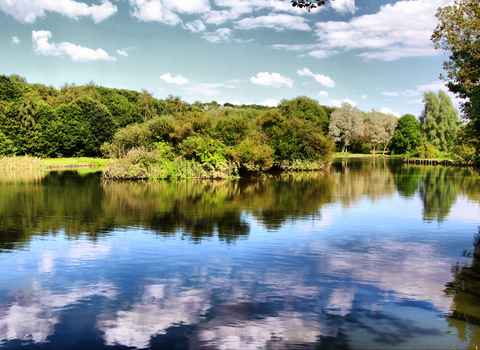Littleworth Park
Location
Know before you go
Dogs
Great areas for free running
When to visit
Opening times
Open at all times. We recommend a 1 hour visit, or combine it with a visit to Dearne Valley Country ParkBest time to visit
March to SeptemberAbout the reserve
Scrubbing up nicely
Plants, insects and amphibians are flourishing in the extensive grassland, lowland heath and pockets of woodland at Littleworth Park – not bad for an out-of-town spot that once had a railway and canal running through it.
Birdlife is increasing too, with willow warblers, lesser redpolls and others benefiting from the scrub habitat.
Smooth newts, common frogs and toads have made themselves at home in the drainage ditches around the edge of the park, along with dragonflies and other wetland insects. We’re creating new ponds to attract more amphibians and insects, as well as birds.
In place of the old towpath and railway line, there’s a perfect wildlife corridor and path to the south of the site, connecting Littleworth Park to Dearne Valley Country Park – ideal if you want to extend your outing and discover more of the local wildlife.
Summer lovin’
The largest colony of heather is at the northern end of the site, although new colonies are also springing up around the reserve. Its flowers create a luscious spread of purple in summer, and on warm days it can be buzzing with bumblebees and other insects.
Many other plants are thriving here, in a grassland rich in wildflowers, such as bird’s-foot trefoil, various clovers, and knapweed. This makes it an excellent place for butterflies, with 24 species recorded, including occasional appearances from dingy skippers. The six-spot burnet is one of the moth species you might find
Habitat
Contact us
Environmental designation
About
The reserve is covered with species-rich grassland interspersed with wooded copses. An extensive site that’s great for a stroll or dogwalk or for burying your head amongst the wildflowers.
The extensive grassland is ablaze with yellow bird’s-foot trefoil in the spring and summer making Littleworth a butterfly-spotting heaven with 24 species recorded. Bees and other invertebrates also abound making the most of the nectar source.
To the northern end of the site is the most extensive heather colony, which makes a splash of purple in late summer. New self-set colonies are springing up across the site.
Littleworth is a place where you can really appreciate the value of good scrub habitat with willow warblers and lesser redpolls a couple of the beneficiaries you can find. Drainage ditches on the edge of the site have become valuable habitats for smooth newts, common frogs and toads, as well as dragonflies and other wetland insects.
The site is a great example of how lowland heath can be recreated on old mineral workings. In order to protect the heather and help it colonise the site we remove birch trees that would shade it out and ensure that the contract grass-cutting does not destroy any of the newly-colonising heather plants.
We are creating new ponds on the site to attract a larger colony of amphibians, invertebrates and birds.
Yorkshire wildlife Trust manages the park in partnership with Barnsley Council for the benefit of local people and wildlife.
Seasonal highlights
- Spring: Birds - Lesser redpoll; Willow warbler; Amphibians - Smooth newt; Mammals - Hedgehog; Invertebrates - Dingy skipper
- Summer: Plants - Bird's-foot trefoil; Bee orchid; Common centaury; Heather
- Autumn: Invertebrates - Six-spot burnet; Birds - Bullfinch; Mammals - Rabbit; Fox
- Winter: Birds - Fieldfare; Redwing; Goldcrest; Goldfinch
History
Originally the routes of the Barnsley canal and a railway ran through the site. They are long gone but to the south of the site the old towpath and railway line form a perfect wildlife corridor and path joining Littleworth Park to nearby Dearne Valley Country Park.
Directions
Public transport
From Barnsley Interchange buses stop at Pontefract Road, Lundwood. Get off the bus at the junction with Littleworth Lane in Lundwood and follow the lane up the hill. Littleworth Park is on your right hand side.
By car
From Barnsley town centre, take the A628 Pontefract Road, cross a mini-roundabout at Lundwood and continue to the next traffic lights. Turn left onto Littleworth Lane. After 200 meters, there is a car park on your right, or continue up Littleworth Lane and park in a small car park opposite Kitson Drive.







